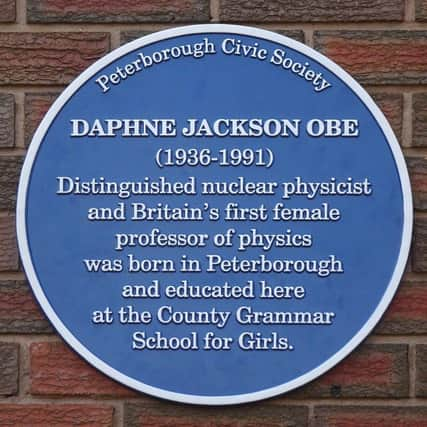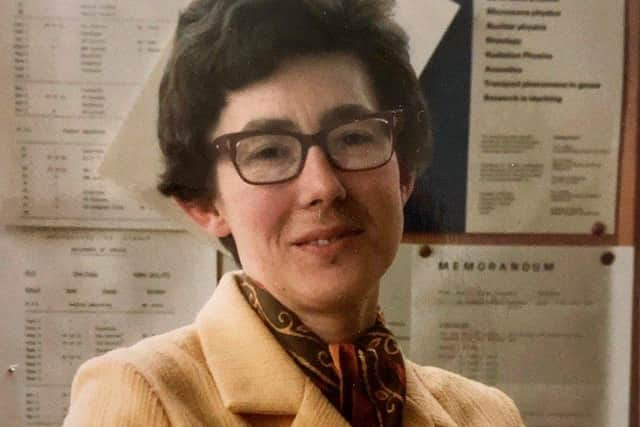Peterborough’s new blue plaques – Nuclear physicist and pioneer for women scientists Daphne Jackson


This plaque is located on the Cobden Avenue side of the Lincoln Gate scheme on Lincoln Road (formerly the site of the County Girls School).
Daphne Jackson was born in 1936 at Willesden Avenue, Peterborough. Her father, Albert, was an engineering fitter and turner, and her mother, Frances, an accomplished dressmaker and designer. Daphne was educated at the County Grammar school for Girls and Imperial College of Science and Technology in London.
Advertisement
Hide AdAdvertisement
Hide AdIn 1958 she became a research student in the physics department at Battersea College of Advanced Technology, earning her PhD in 1962. Appointed lecturer in that year, she helped create an internationally respected group studying the theory of the structure of the atomic nucleus. In 1966 Battersea College became the University of Surrey. Daphne was made leader of the nuclear physics group which grew into the largest and most strongly supported such group in the UK.


In 1971 she was appointed professor and head of the physics department, the first woman to hold either post in the UK; she retained both until her death. It was a source of great frustration to her that she was the UK’s only woman professor of physics for the first 15 years of her appointment. Her leadership qualities and wide perspective were recognized when the university appointed her dean of faculty.
From about 1978 Daphne’s physics interests moved to the applications of nuclear physics, especially in medicine. The department’s two MSc courses in medical physics and in radiation and environmental protection, attracted students from all over the world, providing a source of trained personnel for hospitals and industry.
Daphne published some 80 articles on nuclear physics, 55 articles on medical physics and almost as many on issues of science and society. The many public bodies on which she served included the BBC science consultative group, boards of the Science and Engineering Research Council, the National Radiological Protection Board and the civil service commission final selection board.
Advertisement
Hide AdAdvertisement
Hide AdShe also became active in encouraging women in science and engineering. She conceived and launched the Women Returners’ Fellowship scheme for women who’d had to give up careers in science or engineering because of family commitments. These fellowships made it possible for women to return to high-level technological or scientific careers. She was awarded an OBE in 1987.
At a time when her professional interest focused on the treatment of cancer, it was particularly poignant that Daphne Jackson was herself diagnosed with the disease. Throughout a long illness she continued to work but died at her home in Guildford, on 8 February 1991. Her memory has been perpetuated through her former research students, who hold positions as scientists all over the world, and through the Daphne Jackson Memorial Fellowships Trust.
This plaque is one of a series of fifteen blue plaques recently installed in central Peterborough by Peterborough Civic Society. The new series of plaques augments the 20 existing plaques in the city centre. Further details about all the plaques will soon be found in the accompanying leaflet which will be available at the Town Hall or via the Society’s own website once the Covid-19 lockdown restrictions are relaxed. We wish to acknowledge the support provided for the plaques project by the National Lottery Heritage Fund and Peterborough City Council.